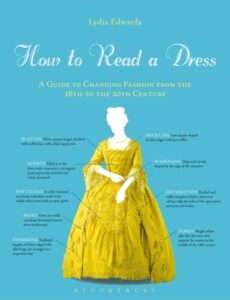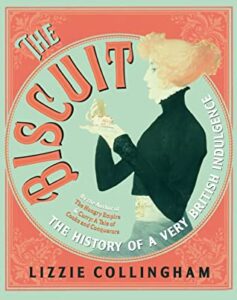Posted February 28, 2021 by Nicky in Reviews / 0 Comments
 Nodding Off: The Science of Sleep, Alice Gregory
Nodding Off: The Science of Sleep, Alice Gregory
This book is about the importance of sleep: the functions it fulfils for us, how that changes throughout our life cycles, and the consequences of not getting enough. It has a wealth of citations, and most of it was unsurprising to me, suggesting it’s a reasonable synthesis of the current state of our knowledge.
However, and this is a really big but, I lost count of how many times Gregory proclaims something and then admits in the next sentence or a footnote that it was a ‘small study’ and hadn’t been replicated in other studies, especially when she says it hasn’t been replicated in larger studies. The fact that she made it sound like these things were facts, when actually it was that shaky, gave me pause about more or less everything she said.
You can’t make big claims from small, underpowered studies. That’s just not how it works. They can be a testing ground, a starting point, but there’s no way you should be presenting them as fact in a pop-science book where people might actually think these are tried and tested facts, even if you explain the study is small. People just don’t grasp the significance of that (or rather, the fact that it’s probably not significant!).
I’ve also definitely had more engaging pop-science reads lately; Sue Armstrong comes to mind. Sleep can be a fascinating topic, but I found myself nodding off over Nodding Off.
Rating: 2/5
Tags: Alice Gregory, book reviews, books, non-fiction, science
Posted February 28, 2021 by Nicky in Reviews / 0 Comments
 The Pocket: A Hidden History of Women’s Lives, Barbara Burman, Ariane Fennetaux
The Pocket: A Hidden History of Women’s Lives, Barbara Burman, Ariane Fennetaux
Focusing on 1660 to 1900 (a very precise time range!), this book uses the tie-on pocket as an ‘in’ to dig into women’s lives via the historical records, including the physical records (pockets which have ended up in collections and museums), writing and court records. It’s a fairly academic book — lots of “meaning resides in the blahblahblah” type language — and also serves as a pretty comprehensive repository for photographs of extant pockets and their details, but it’s accessible enough if you have enough of an interest, and there’s a lot of fascinating detail.
What really surprised me was how long the tie-on pocket lasted, and the wealth of evidence the authors were actually able to show about how they were used, made, obtained, bought, bartered, pawned and gifted. They really do make a good entrée for the history of women’s lives; I thought one of the most interesting parts were the court records, giving us a glimpse into what women carried in their pockets and why.
Not the most riveting read, even for non-fiction, but the photographs are beautifully done and in full colour, and the subject is fascinating enough that I found it well worth the slightly dry and academic approach.
Rating: 3/5
Tags: book reviews, books, history, non-fiction
Posted February 28, 2021 by Nicky in Reviews / 0 Comments
 A Fatal Thing Happened on the Way to the Forum, Emma Southon
A Fatal Thing Happened on the Way to the Forum, Emma Southon
I worried from the title and first few pages that this might prove too flippant and shallow from me, but I was wrong to worry. I quickly settled into it, and it’s obvious that Southon knows her stuff, takes deep joy in it, and knows where she can skimp on explanations a bit in order to get to the meat of things. She gives a lot of context without getting too bogged down in it, while telegraphing that the point is coming; if you really hate comments like “bear with me, we’re getting to the good stuff”, then it won’t work for you… but mostly, I thought she did a really good job.
The idea of a book about murder in Rome gave me a bit of pause, since I didn’t think they really had such a concept… and indeed, I was right, and Southon acknowledges that it’s a very modern way to interrogate these sources, and that in many of the cases described, no one batted an eyelid (the murder of slaves, particularly). As she says, though, the deaths and the attitudes to those deaths still tell us a lot about Roman society and the place of various people within it.
I was intrigued by the topic, but didn’t expect to find it a pageturner; that it was says something about how engaging Southon’s writing was. I found it deeply enjoyable — particularly as it was one of those books that had me turning to my wife to delightedly ask ‘did you know?’ and read bits out or wave my hands excitedly as I connected up bits and shared the fun.
Rating: 5/5
Tags: book reviews, books, Emma Southon, history, non-fiction
Posted February 28, 2021 by Nicky in Reviews / 0 Comments
 The Address Book, Deirdre Mask
The Address Book, Deirdre Mask
Another book read to review on Postcrossing’s blog eventually! This book delves into the history of addresses: we take them for granted now (especially on Postcrossing, where I spend some time every day verifying people have put their addresses in as a standardised format recognised by the UPU), but they’re a relatively recent innovation — and surprisingly powerful, shaping a number of areas of your life. Access to healthcare, benefits, job opportunities, credit, personhood… and of course, the state’s ability to find you when you’ve done something illegal or discouraged (it’s not all positive!).
Mask digs through examples of the uses of addresses for things like epidemiology (the famous map revealing the cholera outbreak centred on the Broad Street Pump… and the less famous story of the recent cholera outbreaks in Haiti), examples of vanity addresses, and instances where the names of streets reveal our history, biases and politics.
I felt like I learned a lot, when I put this down, but right now it’s hard to summarise, partly because it’s pretty wide-ranging. The recurring theme is identity, though, and it opened my eyes to a lot of things about addresses that I’d never considered in that light.
Rating: 4/5
Tags: book reviews, books, Deirdre Mask, non-fiction
Posted February 27, 2021 by Nicky in Reviews / 2 Comments
 A Cheesemonger’s History of the British Isles, Ned Palmer
A Cheesemonger’s History of the British Isles, Ned Palmer
This one is exactly what it says on the tin: a history of the British Isles which follows the lot of cheese, cheesemakers, affineurs and cheesemongers. It touches on a surprising amount of history, getting further into things that you might expect. Armies march on their stomachs, which are partly full of cheese, for a start.
It isn’t, of course, just pure history: there’s also a lot of speculation, from what ancient cheeses might have tasted like to who might have made them and why, and I wouldn’t exactly cite it as a source for something because it’s chatty and speculative, using experience to pry into parts of history we just can’t see. For example, he mentions at one point that the monks in a monastery can’t have been the ones to make the cheese, because they couldn’t leave the grounds and the herds would have been elsewhere… and you need to start the process right away. He speculates that they probably acted as affineurs, aging and storing the cheeses once made.
I don’t always love history when it’s speculative, but Palmer’s expertise about cheese is obvious — and he gets onto more solid ground with sources to refer to as well, with the later parts of the book. I love eating cheese, but it’s obvious I need to try more different kinds of cheese… and I had no idea of most of the details of how cheese is made, how different cheeses are ripened and different effects are produced. Palmer’s enthusiasm makes all of that interesting, and his book is riveting.
Rating: 5/5
Tags: book reviews, books, history, Ned Palmer, non-fiction
Posted February 24, 2021 by Nicky in Reviews / 0 Comments
 Symphony in C, Robert M. Hazen
Symphony in C, Robert M. Hazen
Honestly, I could’ve picked this up just for the title, which I thought was clever. But of course, carbon is an intensely important element for life, so it ties in very much with my interest in biology — no carbon, no us! — and it didn’t seem like it’d be too far off the random path of my current interests. Which proved to be mostly true: I found it harder going than a book about biology, my preferred science, but Hazen’s enthusiasm for his subject carried me along to a great extent.
Often enthusiasm gives life to writing, but I did find that there were bits of this I got a bit stuck on just through not getting involved enough… and knowing that e.g. Richard Fortey can get me excited about rocks with the way he writes, that I do put down to a certain dryness in the writing. Oddly enough, it was the parts on biology I yawned through; I don’t need the facts to be new to me, but if you’re explaining to me about why carbon is the ideal element for life, I need you to make it more exciting than my textbook. (This may not be fair, as I find certain aspects of my textbooks very exciting. The membrane attack complex is a marvel! No, friends who have been subject to me exclaiming about the MAC — I’m not over it yet! Biology is amazing!)
Anyway, if you’re interested in carbon, in the history of how we understand carbon as well as the current state of the field, it’s not a bad read. It’s lacking in tables and images that can really talk people through the data rather than just explaining like a story, so it’s very pop-science in that sense, so I’m not sure how much of it will stick for me. The symphony conceit got old for me/didn’t always feel like the right way to balance/organise the material, but I learned some new things and cemented some others in my mind, and really, that’s all I ask.
Rating: 3/5
Tags: book reviews, books, non-fiction, Robert M. Hazen, science
Posted February 24, 2021 by Nicky in Reviews / 0 Comments
 How To Read A Dress, Lydia Edwards
How To Read A Dress, Lydia Edwards
This book is a handy survey of women’s fashion (mostly of dresses, but occasionally including titbits about other aspects of dress and accessorising, like necklaces and shoes) from the 16th to the 20th century. It features full-colour photographs, carefully annotated with useful pointers as to what to notice, and introductory essays explaining the trends of each period.
The annotation is very good, but the introductory paragraphs for each section are a bit less organised. It doesn’t refer to specific examples of dresses in that chapter, but stays totally general… meaning it’s hard for me — a not especially visual person — to link the dresses up with the trends they illustrate. Sometimes I’d look through the dresses for a specific feature, but not really see anything that seemed to match. In addition, sometimes the text would mention a specific photograph or illustration, but it wasn’t next to the text, and there was no helpful “(figure 3)” or anything; instead it would say something like “this photograph of a gentleman…” Which photograph of a gentleman? What page it is on?!
Anyway, I found it really interesting, and useful, with a few flaws. It would probably work better for someone with a visual memory!
Rating: 3/5
Tags: book reviews, books, history, Lydia Edwards, non-fiction
Posted February 7, 2021 by Nicky in Reviews / 0 Comments
 A World Beneath the Sands, Toby Wilkinson
A World Beneath the Sands, Toby Wilkinson
A World Beneath the Sands is a book not about Egyptology, for the most part, but about Egyptologists — and not just the highlights (Champollion, Petrie, Howard Carter) but some of the less-known names as well, including some of the women who facilitated the study of Ancient Egypt. Broadly speaking, it should have been my thing, but in execution, it just… wasn’t. It was rather slow, and just… not very exciting.
It was mostly about political manoeuvring and the various European countries that jockeyed over control of Egypt, and the doing of archaeology a distant second. The details of digs and finds were barely described, mostly just listed off before moving onto the next list of finds.
In principle, a history of the archaeologists, scholars and looters who shaped our understanding of the history of Ancient Egypt really should have been fascinating, but I found it really dry and unnecessarily verbose. I’m hoping it’s just because I didn’t enjoy the topic as much as expected, because I have another of Wilkinson’s books (The Rise and Fall of Ancient Egypt), and I’m hoping to enjoy that a lot!
Rating: 2/5
Tags: book reviews, books, history, non-fiction, Toby Wilkinson
Posted February 7, 2021 by Nicky in Reviews / 0 Comments
 The Biscuit: The History of a Very British Indulgence, Lizzie Collingham
The Biscuit: The History of a Very British Indulgence, Lizzie Collingham
When I mention that I’ve been reading a history of biscuits, people’s usual response is confusion about why that would take a whole book or be particularly interesting. The answer is that Collingham discusses the social, economic and political circumstances surrounding the development of biscuits, and though the subtitle calls it a “British indulgence“, it discusses other countries too and the colonial uses of biscuits (yes, really — they were thought to be useful in ‘civilising’ places like India).
This was exactly what I was hoping for: a microhistory on a really narrow topic that used that topic to reflect on larger issues. You might not automatically think of looking at the Industrial Revolution through the role of biscuits, or realise the extent to which naval voyages of exploration relied on ship’s biscuit, or appreciate the fact that the original biscuits were twice-baked bread made a couple of times a year in communities that couldn’t afford to bake fresh bread every day… but all those different topics can open out when you start digging in.
You don’t just get to learn about when they started making Jammie Dodgers, or that the company was notoriously cheapskate and used plums for the “raspberry” jam in them because it was cheaper than raspberries… that’s certainly one of the things I learned, but I also learned that the custom of following savoury food with a sweet dessert has come down in a very long tradition from when the stomach was thought to putrefy food, and Arab ideas that sugar was ideal to help seal off the stomach from harmful vapours caused by that process.
In the end, it’s a history of biscuits and it comes back to that pretty swiftly when it strays away, but using the biscuit as a home base, it can tell you an awful lot.
In addition, it also contains some recipes between chapters, some of them traditional and others from modern sources. I haven’t tried any, since I’m not the baker of the family and I’m also very lazy, but it’s a nice touch and we’ll probably keep my copy in order to give them a try someday.
Rating: 4/5
Tags: book reviews, books, history, Lizzie Collingham, non-fiction
Posted February 6, 2021 by Nicky in Reviews / 2 Comments
 Borrowed Time: The Science of How and Why We Age, Sue Armstrong
Borrowed Time: The Science of How and Why We Age, Sue Armstrong
I’ve read one of Sue Armstrong’s books before, on the role of the p53 gene in cancer, so despite aging and the science thereof not really being my thing, I thought I’d give it a try. And it was, in fact, riveting. I knew a little about some of the experiments — I read a paper on sirtuins and resveratrol for my final exam of my BSc, so that gave me some extra context — but much of the detail was new to me, and Armstrong explains things beautifully and keeps things very clear.
The answer to the question of how and why we age is, of course, “lots of ways and lots of reasons”, and the science isn’t all the way yet on understanding exact mechanisms and unpicking the many small effects that can add up over a lifetime. Armstrong avoids giving any false certainty, but makes it clear how people in the know expect things to go, and what they’re cautious about. Unlike some writers, she doesn’t intrude a lot into the narrative (we don’t have to hear stories about her neighbour’s sister’s dog’s brother, which some science writers lean on a bit too heavily), or when she does it feels relevant and useful to understand where she stands.
For a field with so many different puzzle-pieces, Armstrong really brings it together well, and I actually found myself reading this all in one day, in great big chunks. Now that’s good science writing!
Rating: 4/5
Tags: book reviews, books, non-fiction, science, Sue Armstrong
 Nodding Off: The Science of Sleep, Alice Gregory
Nodding Off: The Science of Sleep, Alice Gregory








